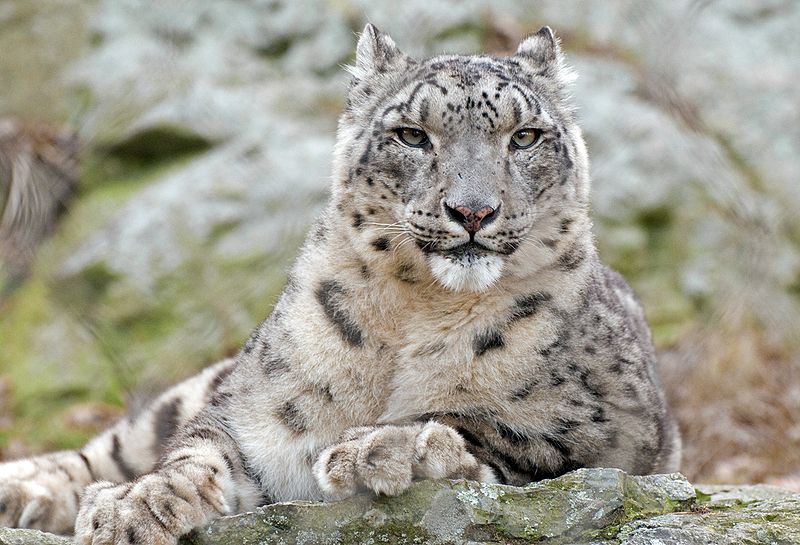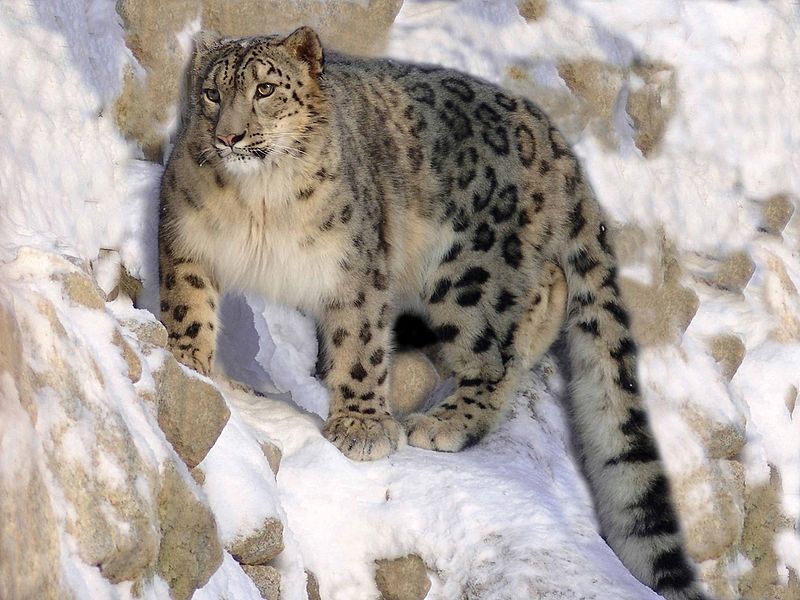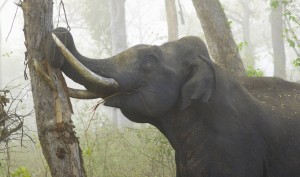The Potential Role of Tibetan Monasteries in Snow Leopard Conservation
The snow leopard resides in the mountains of Central Asia, including those in the Tibetan Plateau. It is endangered and also a keystone species so its loss could have a big impact on the surrounding ecosystem.
 Image: By Eric Kilby from USA (Snow Leopard Relaxed) [CC-BY-SA-2.0 (http://creativecommons.org/licenses/by-sa/2.0)], via Wikimedia Commons
Image: By Eric Kilby from USA (Snow Leopard Relaxed) [CC-BY-SA-2.0 (http://creativecommons.org/licenses/by-sa/2.0)], via Wikimedia Commons The snow leopard resides in the mountains of Central Asia, including those in the Tibetan Plateau. It is endangered and also a keystone species so its loss could have a big impact on the surrounding ecosystem.
The recent publication of a study by Li et al. in Conservation Biology looks at the possible ways to help aid conservation efforts in Tibet. The ‘Role of Tibetan Buddhist Monasteries in Snow Leopard Conservation’ finds that much of the current snow leopard range occurs near monasteries. The beliefs of Buddhism include having compassion for all living things. In fact, there is a tradition of protecting sacred species and natural sites. The leaders of monasteries also have a wide reaching influence, including the way their followers think about the natural environment.
In interviews the study authors found that monasteries patrol their sacred mountains and educated locals about the environment. The governments of countries which have snow leopards can only put so much resources into snow leopard conservation, so the possibility of using Tibetan monasteries and the Buddhist faith to help protect them is an interesting finding. If any snow leopards were to live inside sacred lands then they would already be protected because it is a sin to kill any living animal in Buddhism. However, if monasteries were given more rights they could further help the snow leopard.
The study suggests giving management rights to monasteries could help them to evict poachers and illegal miners. In fact, there are already several local agreements being put in place with just this in mind according to a study in Ecology and Society. The religious leaders often don’t have much knowledge about ecology, so non-governmental organisations and local governments could be used to teach monks and members of the local communities. They could be taught wildlife monitoring skills and how to patrol in order to detect whether snow leopards have been in the area and to help catch poachers.
There are however a few problems with using Buddhist monasteries to aid snow leopard conservation. They protect all animals, and this can often include providing shelter for stray dogs. The study found that packs of stray dogs were preying on blue sheep, which is one of the main prey for snow leopards. This could mean that the stray dogs directly compete with snow leopards in the area, pushing them away from the monasteries to other areas where they can find food more easily.
In conclusion, the study finds that Buddhist monasteries are already contributing to the conservation of snow leopards and there is the potential for them to protect them further if they are given the equipment and training. This just goes to show that habitat protection can come from some interesting places, and with over 80% of the snow leopard’s range falling in areas under the influence of Tibetan Buddhism there is hope yet for the snow leopard.





No comments yet.